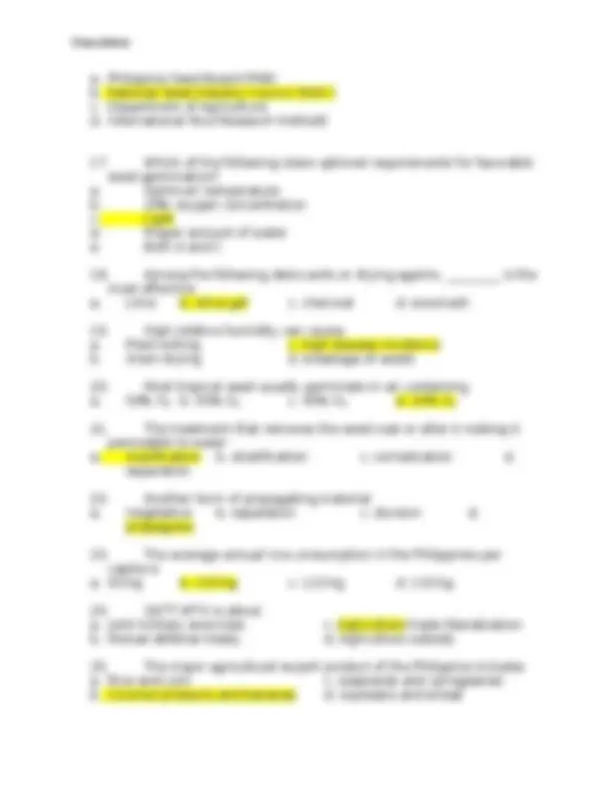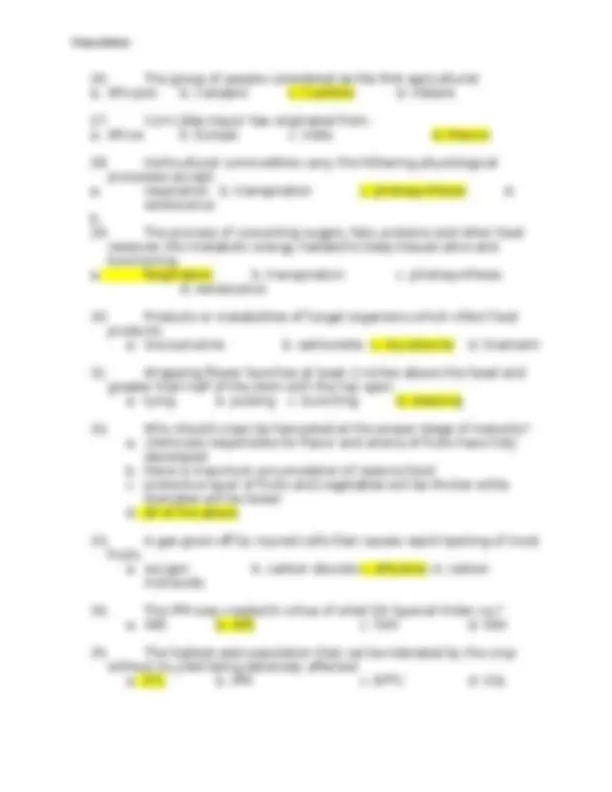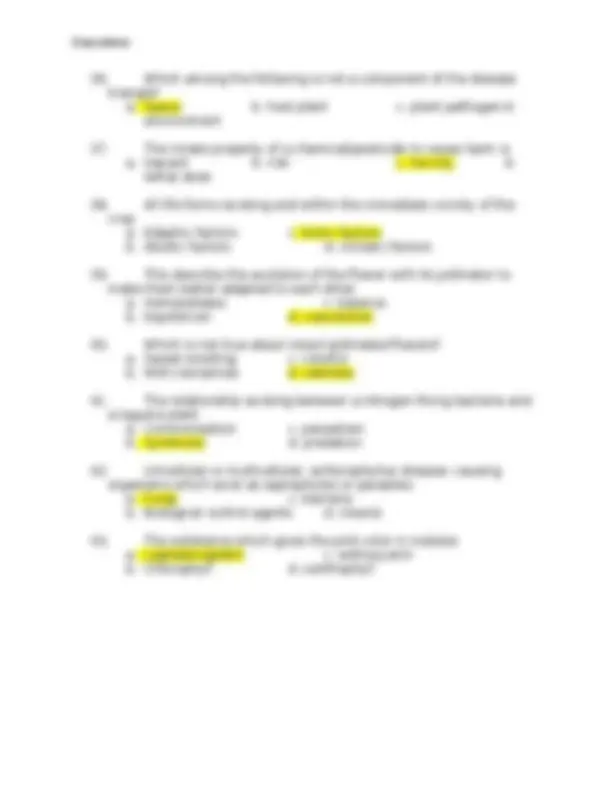Crop science
Crop science-pre test
00. Davao and Bukidnon become the preferred sites for planting export crops
such as banana. The reason for this is/are
a. the areas are typhoon-free c. estate farms are available
b. port facilities are accessible d. all of these
1. Which of the following crops will you plant if you have low labor supply
and low capital input?
a. root crops b. vegetable crops c. non-food crops d.
grains crops
2. A farmer has enough labor and capital but with a very limited land. What
crop will you recommend him to raise?
a. root crops b. vegetable crops c. non-food crops d.
grains crops
3. A farmer inherited from his parents an arable land that is near an
irrigation system. He plans to convert that into a ricefield. What method
of rice culture will he adapt?
a. direct seeding b. transplanting c. dry land seeding d. a and b
4. The practice of working the soil for the purpose of bringing about more
favorable conditions for plant growth.
a. tillage b. pricking c. furrowingd. rotavating
5. The tillage operations where primary and secondary tillage are
employed.
a. plowing b. harrowing c. conventional tillage d. minimum or
economy tillage
6. A tillage operation wherein the only necessary tillage operation is
employed.
a. plowing b. harrowing c. conventional tillage d.
minimum/reduced/economy
7. The degree of tillage varies widely depending on these considerations,
namely:
a. the type of crop being planted
b. the type of farming techniques being practiced by farmers
c. the type of climate and weather conditions
d. both a and b
e. all of the above)
8. Which of the following operations is not included in primary tillage
operation?
a. the first breaking of the soil surface














